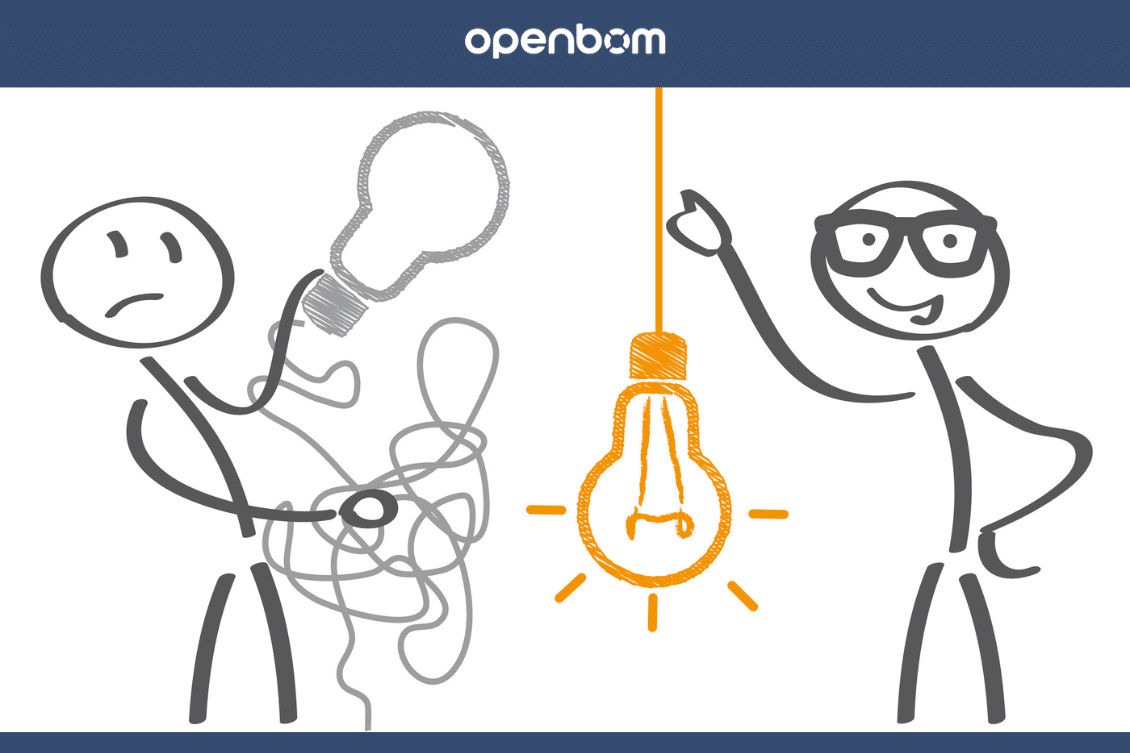
Simplicity is a powerful concept that can transform the way we build and use software. But simplicity is hard… My story of simple applications goes back more than 20 years when I developed custom applications for AutoCAD in Israel. I remember a conversation with a prospective customer who looked at me after I demonstrated to him a prototype and told me with a directness you can only hear in Israel during customer meetings – I want to have a “one button application”. I looked sadly at the program we just demonstrated full of buttons and menus and asked him – how do you want me to put all these functions in a single button? The answer was very simple – yes, but you need to figure it out. I want to have a single button and this button should do what I need when I click on it.
After many years I still remember this conversation. And also how hard to create simple things. When I came to the enterprise and engineering software industry I was told – enterprise software is a business, no one is buying it for fun, so it is ok to be complex. These enterprises are complex and software for them is complex. Complexity requires services and education, so it is a win-win. We can give them software and teach them how to use it, they pay us and everyone is happy. I’ve seen how enterprise PLM software is deployed to large companies. It is a very complex process. But the idea of “simple” stuck inside me…
Over the course of many years, I was always fascinated by how Excel’s simplicity and ubiquitous user experience made spreadsheets the second-best software for everything. In the engineering data management world, you can pick a problem and ask engineers to find a solution and they will come back with “Excel that solves the problem”. Excel combined with collaboration (Google Sheets) was another inspiring moment to think about how powerful simplicity can be when it is combined with collaboration and data sharing.
Many articles are written about PLM and simplicity. Here are a few “must read” in my view – 5 Simple Tips To Make PLM Simple by Helena Gutierrez and Why PLM will never be Simple by Jos Voskuil.
The importance of simplicity and simple user experience had changed dramatically over the last 20 years. What I wrote about enterprise systems above is a history we can smile about. Enterprise software vendors are investing a lot in user experience with mixed success. It is still very hard.
Over the last five years, while developing OpenBOM, I’ve made many mistakes but also learned a couple of things about how to make things simpler. Although we are not done by any means, I’d encourage you to read customers’ stories and what customers are saying about OpenBOM in G2 reviews. I thought my lessons will help others.
Here are five key lessons I’ve learned along the way:
Build for known habits:
When creating a new software product, it’s essential to build with users’ existing habits in mind. People are naturally inclined to follow familiar patterns and behaviors. By designing your product to align with these habits, you can reduce the learning curve and make it more intuitive for users to adopt. Building on known habits ensures that users can easily understand and navigate your platform, which ultimately leads to a better user experience. Habits for using folders and files, existing navigation patterns, and file sharing are obvious examples. Bad habits from existing PDM/PLM/ERP applications are also habits and they die very hard. Keep it in mind too.
Guide instead of train:
No one reads documentation these days (although everyone demands to have it). Instead of overwhelming users with a lengthy training manual, focus on providing clear and intuitive guidance within the product itself. Simplicity means designing an interface that guides users through their tasks without the need for extensive explanations. Use tooltips, contextual cues, and step-by-step instructions to help users accomplish their goals. By guiding users through the platform, you empower them to explore and discover features on their own, fostering a sense of independence and ownership.
Integrate with existing workflows:
To truly simplify users’ lives, it’s important to integrate your product seamlessly into their existing software and workflows. Understand how your target audience operates and identify pain points in their current processes. Therefore, we made OpenBOM to fit naturally within those workflows, rather than requiring users to drastically change their habits. By integrating with existing tools, such as CAD software or ERP software we achieved a more cohesive and efficient experience.
Evolve, but don’t break:
Simplicity does not mean stagnation; it means continuous improvement. As you gather feedback from users and analyze their behaviors, you will undoubtedly uncover areas for enhancement. However, it’s crucial to evolve the product without breaking the existing functions you already provided. Especially in SaaS when users never stop to use your software, you need to be very careful when changing a feature or function that was available for a long time. Knowing that, think carefully about “features and options”. Once added, it will stay for a very long time and will require a substantial effort to be removed.
Users are looking for simple and magical things:
Users are inherently drawn to products that provide a simple and magical experience. Simplicity alone is not enough; it should be accompanied by a touch of magic. Users want to be delighted and amazed by what your product can do for them. Identify opportunities to introduce delightful moments, whether through seamless automation, intelligent suggestions, or clever design elements. By combining simplicity with a touch of magic, you can create a truly memorable and captivating user experience.
Conclusion
Simplicity is a powerful force that can shape the success of a software product. Through my experience building OpenBOM, I’ve learned that building for known habits, guiding users, integrating with existing workflows, evolving without breaking, and adding a touch of magic are all key elements in achieving simplicity. By incorporating these lessons into your product development process, you can create a user-friendly and compelling experience that resonates with your audience.
However, here is one more “bonus”. You cannot build a simple thing from the first shot. It never works. Therefore, agile process and many iterations can help you to figure out the right behavior, function or feature.
Remember, simplicity is a journey, and it requires continuous refinement, but the rewards are well worth the effort.
REGISTER FOR FREE and start a 14-day trial and see how OpenBOM can help you today.
Best, Oleg
Join our newsletter to receive a weekly portion of news, articles, and tips about OpenBOM and our community.










